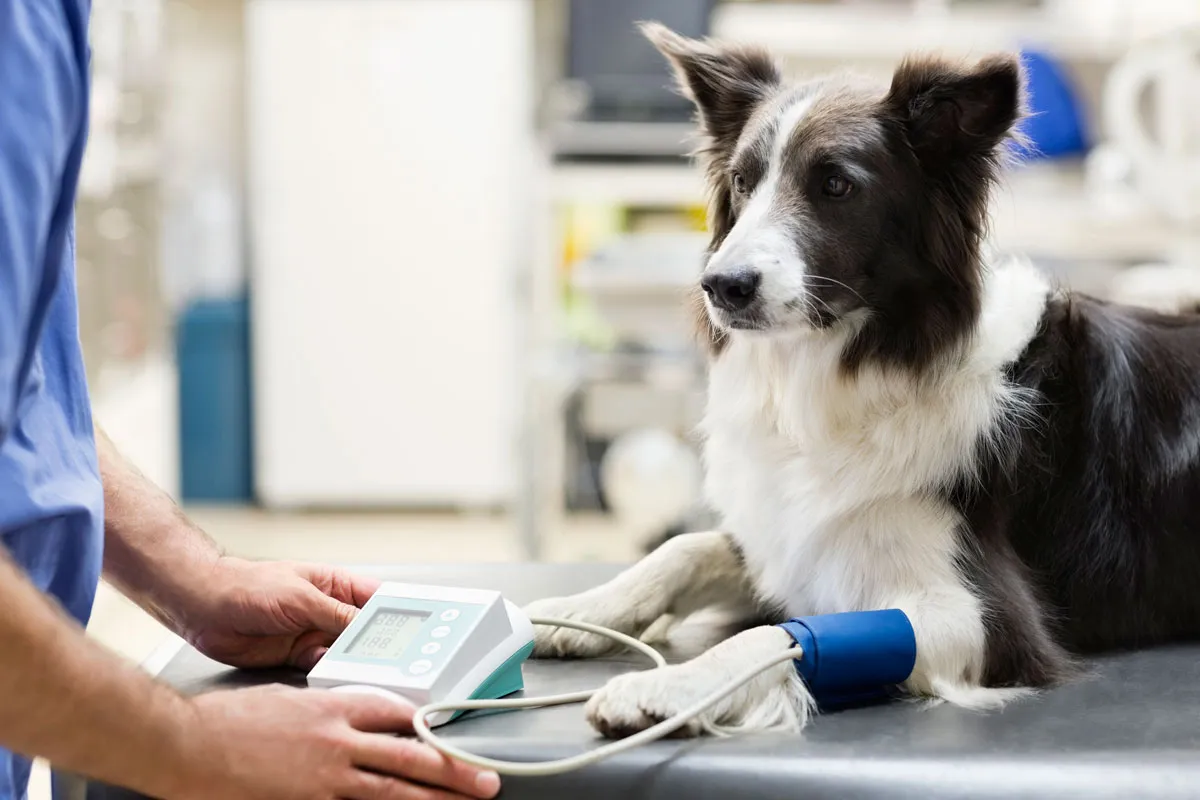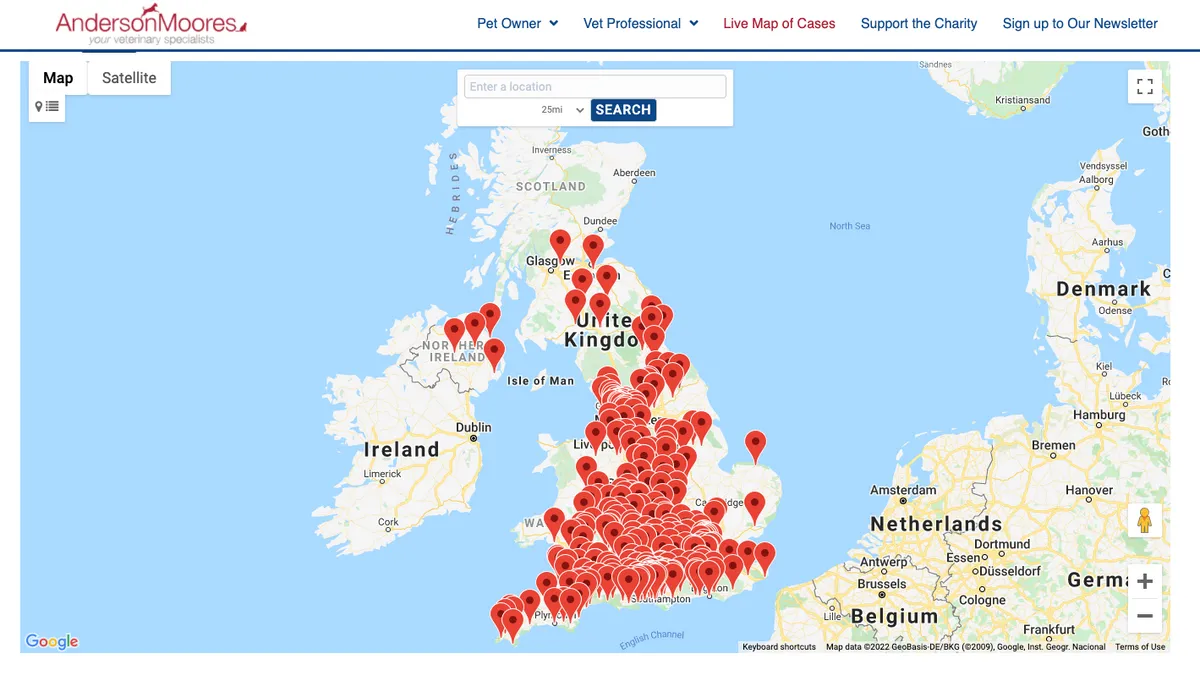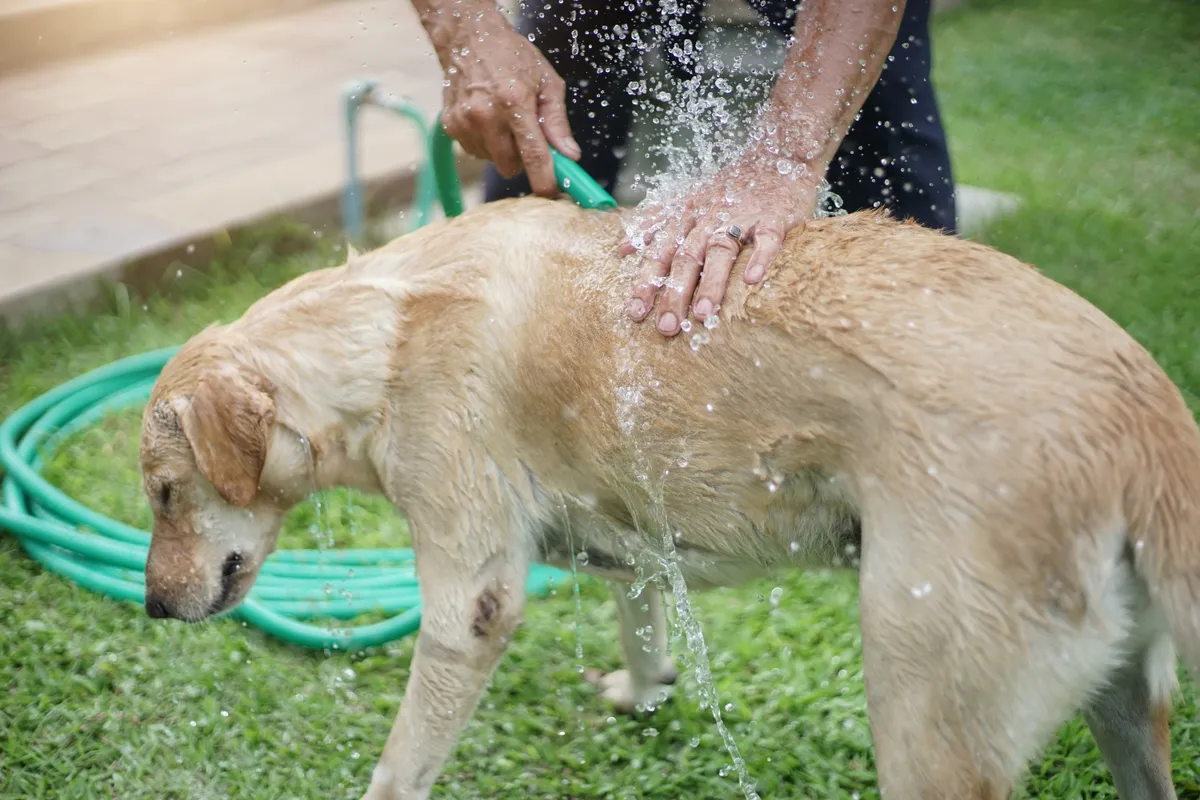As dog owners we all want to enjoy walking and exercising our pet safely. However, it is worth being aware of potentially fatal dog diseases that can be caught in the UK while doing so and learn how you can keep your dog happy and healthy by following some of the simple steps outlined in this guide.
In the muddy winter months, Alabama dog rot is more common in the UK, although thankfully it still remains a relatively rare disease. However, cases have risen since the 1980s and in 2022, there were 11 further cases reported in the UK. In total, there have been 292 cases confirmed cases of Alabama rot across the UK since the first case was reported in 2012.
There are things you can do to protect your dog. Our expert guide has been written with the help of two leading vets, and explains what Alabama dog rot is, how to spot the signs and symptoms, and what you can do to prevent your dog catching this deadly disease.
Updated content (March 2023) provided by Josh Walker, an American College of Veterinary Internal Medicine (ACVIM) diplomate, who leads the CRGV research at Anderson Moores alongside David Walker, American, RCVS and EBVS European specialist in small animal internal medicine.
Original content provided by Ashley Gray MA Vet MB Ph.D. MRCVS, Vetsure.
What is Alabama dog rot?
Alabama dog rot is a disease that causes damage to a dog's blood vessels and the kidney. It is a mysterious disease which is hard to identify and sadly, very difficult to treat. It can cause a dog's skin to rot as it eats the flesh of the animal which makes it a particularly distressing disease.

Why is it called Alabama Rot?
Alabama dog rot was first identified amongst greyhounds in the state of Alabama in the 1980s. After this first flair up, the number of reported cases dwindled and as no clinical research was carried out, the disease was almost relegated to history. Because no one has been able to determine what causes the disease, it is now only recognisable by its collection of clinical symptoms. The scientific name for Alabama Rot is Cutaneous and Renal Glomerular Vasculopathy (CRGV).
More related content:

How many dogs have been affected in the UK?
Updated: Thursday 9th March 2023
Since the disease was first detected in 2012 in the UK the number of cases of Alabama dog rot in dogs has risen to 292 confirmed cases. The most serious outbreak was in the New Forest region of Hampshire but there have also been reported cases in several other counties, with the most recent cases reported Gloucestershire, Monmouthshire, Devon, Dorset, Cheshire, Warwickshire, Greater Manchester and Worcestershire.
According to Vet Times, the highest number of confirmed cases has been in Greater Manchester, Dorset, Devon and the New Forest in Hampshire.
Confirmed cases of Alabama dog rot in the UK
- 2016: 19 cases
- 2017: 40 cases
- 2018: 46 cases
- 2019: 29 cases
- 2020: 37 cases
- 2021: 28 cases
- 2022: 11 cases
Since 2012, there have been a total of 292 confirmed cases of Alabama Rot in the UK.
Experts at Anderson Moores Veterinary Practice in Hampshire have launched a website dedicated to Alabama Rot Disease. The new site offers advice and information about CRGV to pet owners, including a live map of confirmed cases across the UK:

The first two cases in 2023 were in Berkshire and Hampshire.
Josh Walker, an American College of Veterinary Internal Medicine (ACVIM) diplomate, leads the CRGV research at Anderson Moores alongside David Walker, American, RCVS and EBVS European specialist in small animal internal medicine.
He said: “Unfortunately, this is the time of year when cases are most commonly identified and, sadly, we have seen the first two cases in 2023, following 11 confirmed cases in the UK last year.
“We’re advising dog owners across the country to remain calm but vigilant and seek advice from their vets if their dog develops unexplained skin lesions.”
How is Alabama Rot spread?
There has been some speculation that walking dogs in particular areas of the countryside may be a contributing factor, but the Forestry Commission has yet to warn of any specific sites being dangerous, reassuring dog owners by saying “Many thousands of dogs are walked in the countryside every day and it is important to remember that only a very small number of dogs have been affected.”
How do I prevent my dog from contracting Alabama rot?
There are no specific steps you can take to prevent your dog from contracting the disease, but there is some evidence of seasonal fluctuation, with most cases appearing between November and June. New advice suggests keeping your dog away from very muddy areas.
[image id="4984" size="landscape_thumbnail" align="none" title="GettyImages-546293856-87a4f5a" alt="GettyImages-546293856-87a4f5a" classes=""] If possible, keep your dog away from very muddy areas when out walking./Credit: Getty.It is suspected the disease spreads from muddy and wooded areas – dog owners who do walk their dogs in these places are advised to wash off any mud as soon as possible, and of course, keep close control of their dogs at all times to monitor where they go.

Can other animals catch Alabama Rot?
Other pets, such as cats, guinea pigs or rabbits are not thought to be affected by Alabama Rot.
How do I know if my dog has Alabama dog rot?
Here are the key signs of Alabama dog rot to look out for.
The first sign of Alabama Rot is skin sores that have not been caused by a physical injury. These sores can present as lesions, swelling, a patch of red skin, or may be open and ulcer-like. The sores are most commonly found below the knee or elbow or occasionally on the stomach or face. Usually, this will cause localised hair loss and the dog will begin licking the wound. These lesions will be followed – between two and seven days later – with outward symptoms of kidney failure: reduced appetite, fatigue, and vomiting.
Affected dogs will also develop signs of severe depression, loss of appetite and vomiting, quickly accompanied by acute injury to the kidneys.

What should I do if I think my dog has Alabama rot?
The best outcomes seem to be achieved by catching it early and the animal receiving high-quality veterinary care. Whilst some infected dogs do survive the treatments of skin sores and kidney failure, unfortunately, many do not – it is estimated that treatment is only successful in around 20-30% of cases.
It is important, however, not to get overly worried by this as the percentage of dogs in the UK who have contracted this disease is truly minuscule. Though, what is vital, is that you understand the problem and know what to look out for, should your dog come into contact with it, as time plays a large part in successfully treating the disease.
What is the source of Alabama dog rot?
The source of the disease is unknown, with the Environment Agency ruling out any chemical contamination in water supplies. Experts believe the disease is “very similar” to Alabama Rot, thought to be related to a toxin produced by E. Coli bacteria. However, no evidence of this has been found after no signs were shown on the infected dogs.
Updated content (March 2023) provided by Josh Walker, an American College of Veterinary Internal Medicine (ACVIM) diplomate, who leads the CRGV research at Anderson Moores alongside David Walker, American, RCVS and EBVS European specialist in small animal internal medicine.
Original content provided by Ashley Gray MA Vet MB Ph.D. MRCVS, Vetsure.
Main image credit: Getty